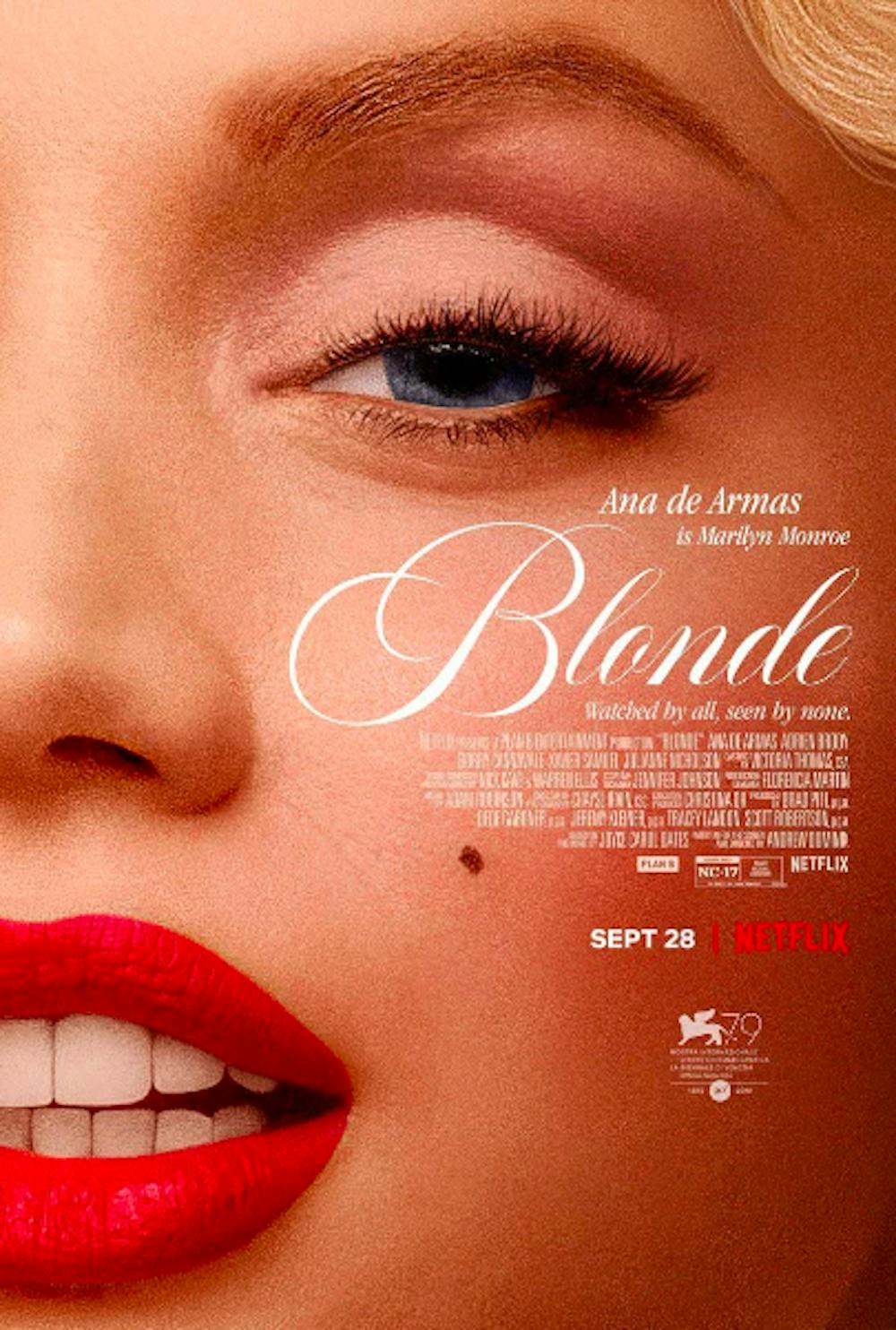By Sara Nigro
Staff Writer
“Blonde,” a biographical drama about Marilyn Monroe, was released on Netflix on Sept. 28.
Starring Ana de Armas as Norma Jeane, more widely known as Marilyn Monroe, the film follows the life of the infamous Hollywood actress. Despite its interesting premise, the film falls short due to inconsistent themes and messy storytelling.
While de Armas does give an impressive performance, the lead character is unable to save the film from its substandard writing and filmmaking.“Blonde” was directed and written by Andrew Dominik, known for his films “Chopper” and “Killing Them Softly.” The film is based on a book written by Joyce Carol Oates, also titled “Blonde,” which details a fictionalized account of the actress’ life.
The film begins with Monroe as a child while she learns about the father she has never met and watches her mother spiral out of control as she suffers with mental illness. We see very little of Monroe’s childhood, however, as anyone knowledgeable on the general history of the star would know, the events of her young life are crucial to understanding her as an adult.
“Blonde” heavily focuses on her relationship with her father, or lack thereof, which sometimes creates falsities in otherwise accurate parts of the story. The film includes narrations from him and letters sent to Monroe throughout the years, making it seem like the story should solely focus on this relationship.
The plot as a whole is very scattered, and easily misunderstood, as the structure is incredibly disorganized. Unlike other biographical films, “Blonde” omits many parts of the main character's life, transitioning from child to adult without the context of ages or dates. Monroe is seen in acting classes, in fictional relationships and struggling with her identity without context as to why or how she got to these places. As a viewer, I felt lost at times due to the constant shifting between scenes without explanation or clarification.
While it is categorized as a biography and drama, I think that the fictional elements throughout the film blur the lines of the genre. For example, early in the film, Monroe is involved in a polyamorous relationship with two other men, one of whom claims to be Charlie Chaplin’s son.
There is no proof of this relationship occurring in Monroe’s real life. Therefore, this part of the movie is interesting and entertaining, but confusing to those who are knowledgeable about the actress.
Intertwining factual information with the fictional elements adds to the chaos and confusion that is a common theme throughout the film.
Stylistically, Dominik made the choice to have some scenes shot in black and white and others in color. There was little organization to this choice and seems to make the film appear messier and confusing. As a viewer, I spent a lot of time trying to figure out the deeper meaning behind it.
At points I wondered if the black and white scenes were meant to depict the “character” of Marilyn Monroe, and the color ones were intended to represent her true self, Norma Jeane. The distinction between these two personas was a common theme in the film, so that would have seemed more logical and could have strengthened the overall plot.
Except for the coloring, I appreciated the overall editing choices in the film. In many circumstances, it added to a greater understanding of how Monroe felt as a character, as well as how she was viewed by different people in her life.
For example, during one of Monroe’s red carpet events, the camera captures the paparazzi and the male fans screaming at her as she walks the carpet prior to a movie premiere. In this scene, the audience sees the fans through the actress' eyes as the men stare and scream, with the editors contorting their mouths for emphasis.
This exaggerated portrayal of her “crazy fans” reflects her rising stardom and how her popularity shifts over the course of her lifetime.
There were also some interesting metaphorical takes throughout the film. My favorite is a scene in which Monroe imagines that her childhood home is on fire, which reminds me of the common phrase, “when you’re born into a burning house, you think the whole world is on fire.”
I think this scene is meant to reflect the trauma that Monroe experienced in her childhood from her abusive mother and lack of a father figure. This scene portrays the internal struggles that she faced without directly saying it to the audience.
While there are some successful attempts at portraying a moving message, “Blonde” is unable to focus on any aspect of Monroe’s life enough to give an in-depth, meaningful story to its audience. The plot as a whole is disorganized and missing important details to fully develop a unique story and the character of Marilyn Monroe.







